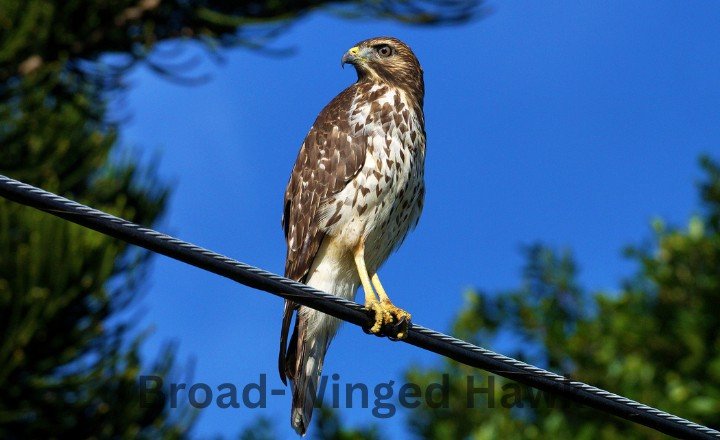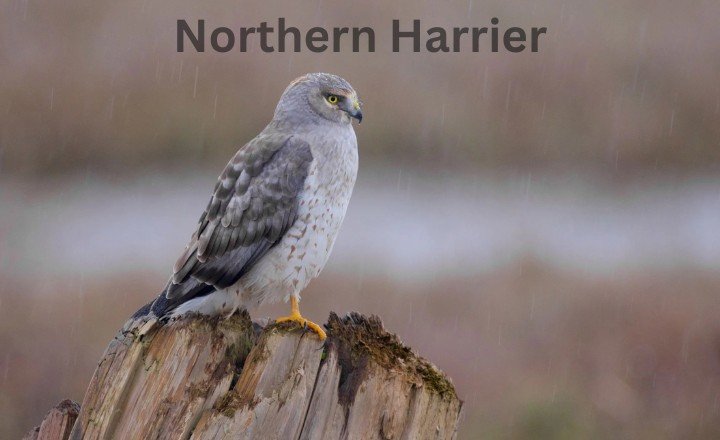5 Types of Hawks in Georgia (With Pictures)
As a birdwatching enthusiast, I often find myself captivated by the majestic flight of hawks soaring overhead, their silhouettes dancing against the brilliant blue skies of Georgia. With its diverse habitats ranging from lush forests to open fields and wetlands, this southern gem serves as a haven for these magnificent raptors. Whether gliding effortlessly on thermal currents or perched silently atop towering pines.
This article explores 5 different kinds of hawks in Georgia from the familiar Red-tailed hawks with their iconic call to the elusive Sharp-skinned hawks darting through thickets in pursuit of smaller birds, each species plays an essential role in our ecosystem.
Origin of Hawks
Before we delve into the types of this unique bird, exploring some of its origins would be a cherry on the cake!
Hawks belong to the family Accipitridae, a lineage that originated approximately 60 million years ago during the Paleocene epoch. This period marked a significant evolutionary juncture when raptors began to adapt distinct hunting strategies that set them apart from their ancestors. Initially small and forest-dwelling, ancient hawks gradually evolved into formidable aerial hunters. It is also said that the White Birds and some of the Black Birds also evolved during this period.

Their sharp talons and keen eyesight became essential adaptations for capturing prey in diverse environments, from open grasslands to rugged mountains. With fewer competing predators in their new ecological niches, these birds found ample opportunities to explore various prey options and habitats across continents.
Fossils reveal that early hawks exhibited varying traits that hinted at specializations some were adept at soaring high above landscapes while others became adept ambush hunters, showcasing nature’s incredible inventiveness.
Now hawks are more than just efficient predators, they symbolize resilience and adaptability in an ever-changing world. Observing their flight patterns can provide insight into environmental health declines in certain species may signal disruptions within ecosystems.
Types of Hawks in Georgia
Georgia is a haven for bird enthusiasts, home to an astonishing variety of avian species that thrive in its diverse ecosystems, from lush forests to expansive wetlands. Among the most captivating residents are the hawks, sometimes different types of Little Green Birds are also spotted there.
One unique aspect of birds in Georgia is their seasonal migration patterns. During spring and fall, many species pass through the state, turning popular spots like Kennesaw Mountain into must-visit locations for birdwatchers eager to witness these fleeting visitors. The impressive Broad-winged Hawk embarks on extensive migrations that can lure crowds of wildlife lovers hoping to catch sight of thousands soaring together in a breathtaking display known as a kettle.

The enchanting calls of Eastern Bluebirds and Brown Birds, or vibrant flashes from painted buntings create a dynamic tapestry against Georgia’s verdant landscapes. This rich diversity makes birdwatching both accessible and rewarding from novice hobbyists looking out for familiar backyard friends to seasoned ornithologists tracking rare migratory species there is always something new waiting just outside your window in this avian paradise.
Red-Tailed Hawk
With its striking reddish-brown tail and piercing gaze, is a symbol of strength and adaptability in North American wildlife. It is often seen soaring effortlessly across open skies, this bird of prey has a wingspan that can reach up to 56 inches. Beyond their impressive physical traits, these raptors are renowned for their remarkable hunting skills.

They primarily feast on small mammals such as rodents and rabbits but also adapt their diet according to the season and available prey, showcasing their resilience. The red-tailed hawk plays a critical role in maintaining the ecological balance within its habitat. By regulating populations of smaller animals, it helps prevent overgrazing of vegetation an essential factor for sustaining diverse ecosystems.
Their vocalizations are equally fascinating; the iconic scream often depicted in movies is just one part of a broader repertoire used for communication varying from soft whistles during courtship to short barks when warning off intruders.
Red-Shouldered Hawk
Its striking bird of prey stands out not just for its vivid plumage but also for its intriguing behavioral patterns. With their characteristic rusty-red shoulders and broad tail bands, these hawks are rarely mistaken for anything else in the wooded areas they frequent. Unlike many raptors that prefer open fields or rugged mountains.

Red-shouldered hawks thrive in deciduous forests near water bodies environments where their keen eyesight can help them spot small mammals, amphibians, and even fish. Unlike other hawks that may rely solely on stealth while hunting, these agile flyers showcase remarkable aerial displays to ward off competitors or chase away intruders from their territory.
What makes the red-shouldered hawk particularly fascinating is its vocalization. Their distinctive call a series of loud and resonating “kee-kee-kee” sounds dominates the soundscape of their habitat during breeding season.
Broad-Winged Hawk
It’s a master of the woodlands and a marvel of migratory prowess, often going unnoticed despite its remarkable presence. With a wingspan that can reach up to 36 inches, this medium-sized raptor glides effortlessly through the forest canopy, using its distinctive rounded wings to navigate with grace and precision. Unlike other hawks that prefer open terrains, the broad-wing thrives in diverse wooded habitats where it surveys its territory for prey such as small mammals and birds.

Another fascinating aspect of the broad-winged hawk is its migration pattern. Each fall, these birds embark on an astonishing journey from North America to Central America or even Northern South America a journey that can exceed 1,500 miles! Unlike many species that travel alone or in small groups, broad wings are known for their spectacular kettle formations, during migration season, thousands can be seen soaring together in large flocks utilizing thermal updrafts.
Sharp Shinned Hawk
It’s a master of stealth and agility and captivates birdwatchers with its remarkable hunting prowess. It is commonly found in North America, this small raptor is often mistaken for the similarly sized American kestrel due to its stealthy flight patterns and bold hunting techniques. Unlike larger hawks, the sharp-shinned employs quick dashes and abrupt turns to outmaneuver both prey and potential predators. It primarily targets songbirds such as Red Birds in backyards or at feeding stations, making it a familiar sight for many nature enthusiasts eager to observe its impressive aerial skills.

What makes the sharp-shinned hawk particularly fascinating is its adaptability to urban environments. As cities expand into natural habitats, these birds have become increasingly common visitors in residential areas, thriving in green spaces that mimic their forested homes.
Northern Harrier
With its distinctive owl-like facial disc and low-gliding flight, it is a master of stealth in the marshes and grasslands it calls home. Unlike many raptors that soar high above their hunting grounds, this bird is known for its unique hunting strategy flying just above the ground to survey for prey. This behavior not only showcases its adaptability but also emphasizes its acute sense of vision and hearing, which helps detect movement in dense vegetation.

What truly sets the Northern Harrier apart is its social nesting behavior unlike most raptor species that fiercely defend individual territories, these birds are often found nesting in loose colonies. This communal approach may enhance protection against predators and increase foraging efficiency as they rely on each other’s vigilance. Their gentle calls can be heard during courtship rituals, adding a layer of sociability to their otherwise solitary lifestyles after breeding season ends.
Wrapping Up ‘Types of Hawks in Georgia’
Georgia is home to a diverse range of hawk species, each playing a vital role in the state’s ecosystem. From the majestic Red-tailed Hawk to the agile Cooper’s Hawk, these birds exhibit fascinating behaviors and adaptations that make them remarkable predators. Understanding the different hawks in Georgia not only enriches our appreciation for wildlife but also highlights the importance of conservation efforts to protect their habitats.
FAQs
What Kind of Hawk Lives in Georgia?
Many hawks are seen flying in the azure skies of Georgia, with Red-shouldered hawks, red-tailed hawks, Broad-winged hawks, and Cooper’s hawks topping the list.
What is the Difference Between a Hawk and a Falcon in Georgia?
Hawks have shorter and rounded wings with long and narrow tails whereas falcons have long and pointed wings with a longer tail than hawks.
Are Hawks Protected in Georgia?
Yes, they are protected under the State and Federal Laws in Georgia. Their hunting is illegal and the case will be filed if anyone violates the laws.
What are Hawks Famous For?
These unique birds are famous for their powerful hunting skills, keen eyesight, impressive aerial acrobats, and fearless approach.






